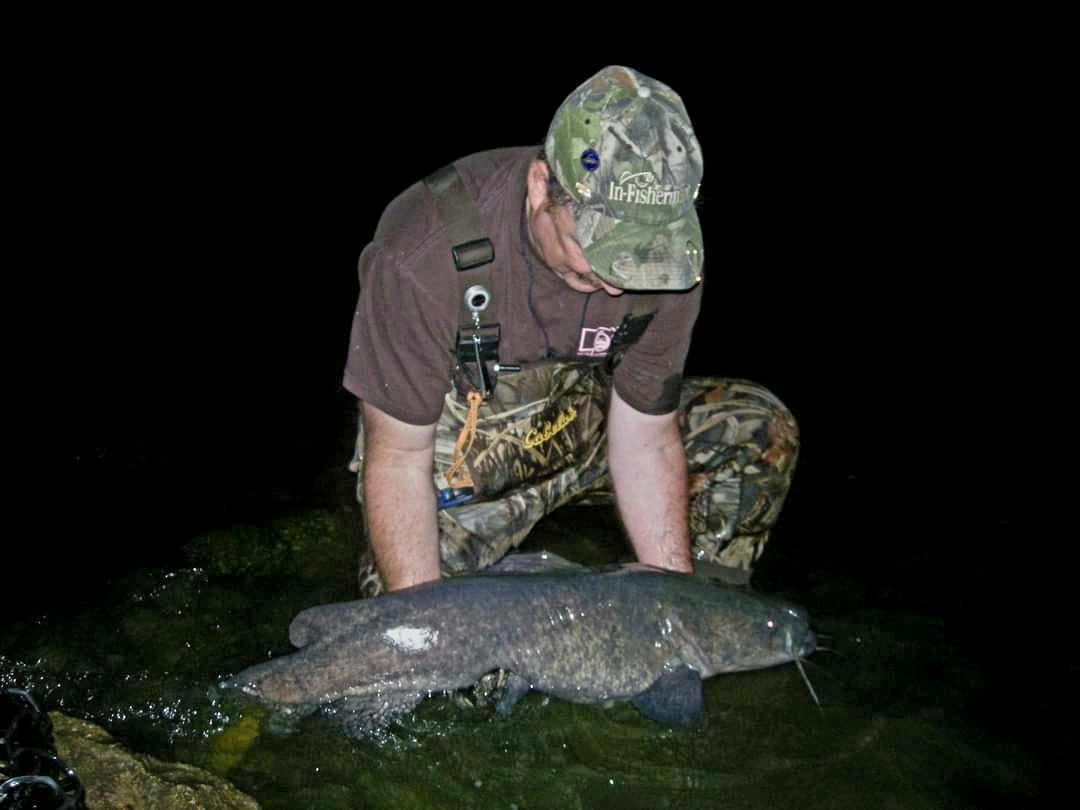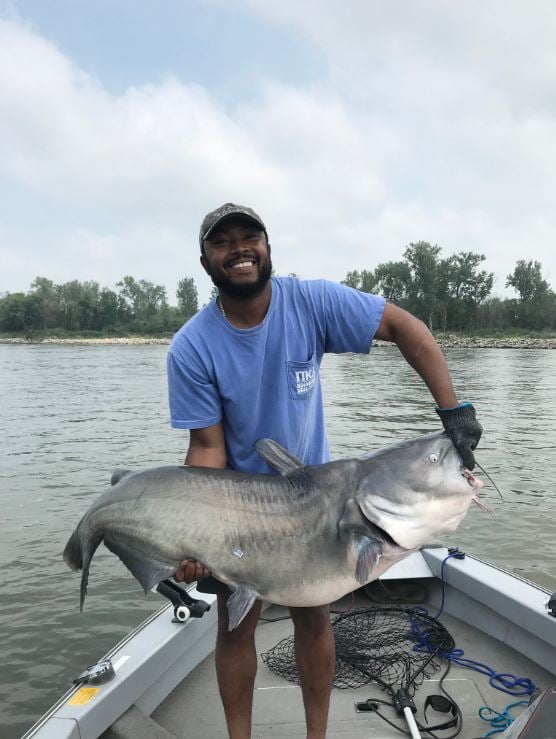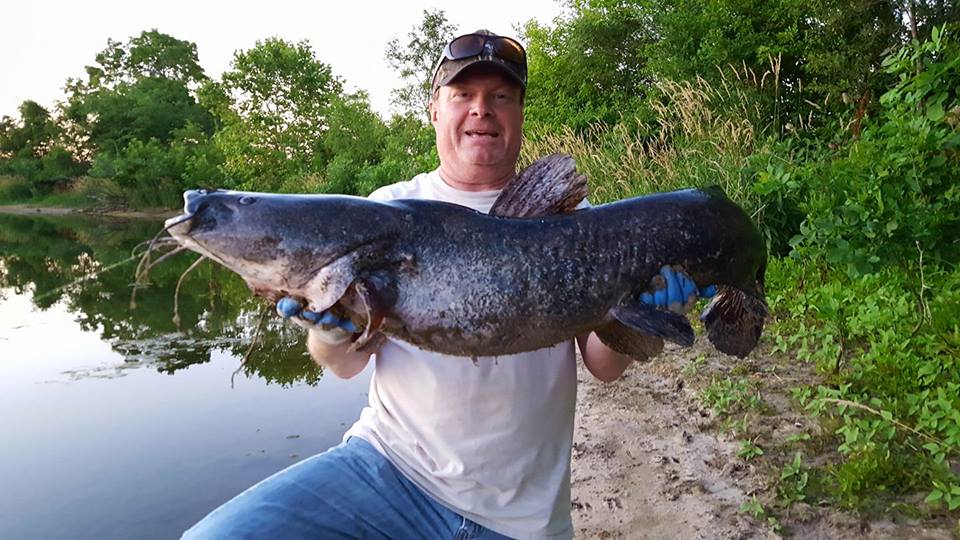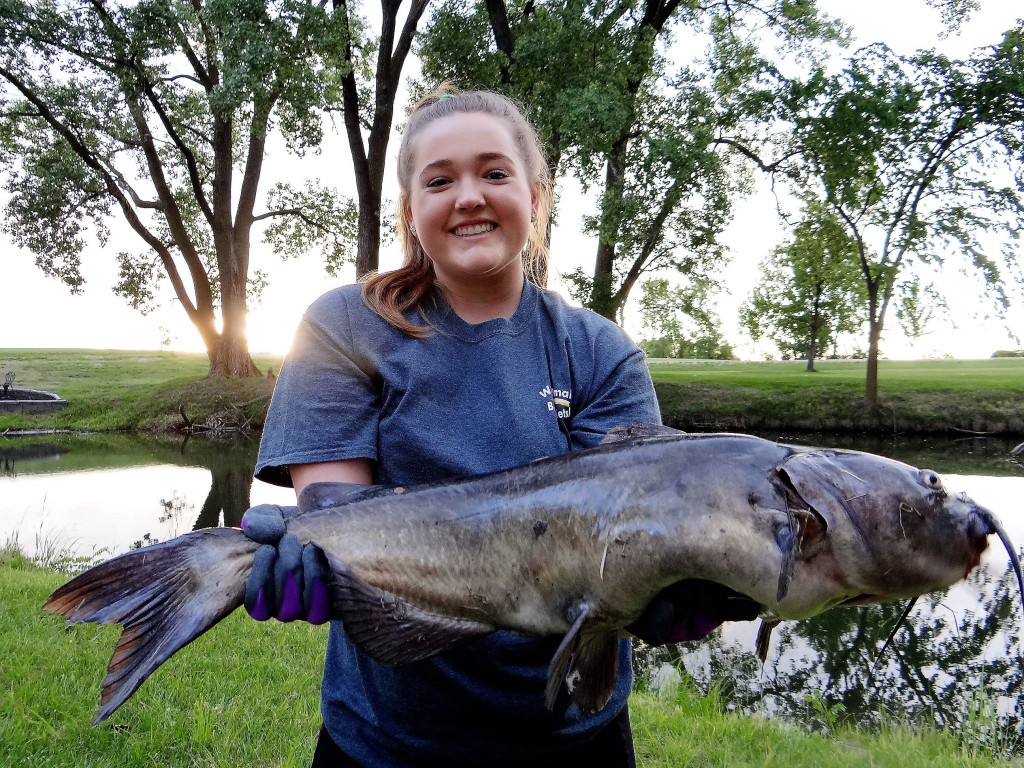Freshwater catfish family members are in post-spawn mode now in Nebraska waters and are quite susceptible to being caught as they are hungry and are now building up fat reserves for the cold weather months of fall and winter that lie ahead.
With that in mind, please allow me to take this opportunity inform you on why I am so passionate about and concerned with that ‘big un’ with whiskers being dispatched, chucked up and then taken home for the fryer.
First, let me say that I have never judged any licensed angler who has kept a large catfish to eat, and I won’t as long as that licensed angler is obeying the laws and regulations set forth by the Nebraska Game and Parks Commission. See those in the current Nebraska Fishing Guide publication online at www.OutdoorNebraska.gov
But, let’s cast into the issue of catching and releasing voluminous catfish family members.

Unlike other game fish, the growth of catfish is very slow, and giants are rare. Actually, catfish are among the slowest growing freshwater fish in our part of the country.
Texas Parks and Wildlife Department age and growth studies indicate that a 40-pound blue catfish could be 25 years old! A 30 inch blue catfish in Oklahoma and Missouri averages 10 to 12 pounds and is most likely around 14 years old! And, in Nebraska, Daryl Bauer of the Game and Parks Commission’s Fisheries Division adds that a 10 pound channel catfish is most likely to be dozens of years old!

Thus, it takes a while for catfish to reach trophy and spawning sizes with some not even surviving adulthood under ideal or normal circumstances. Also, with catfish, larger specimens are resilient in the water with variable conditions and pass on physical traits and survival instincts to thousands of young. Essentially, proper catch and release fishing improves wild catfish populations by allowing more fish to remain and successfully reproduce in an aquatic ecosystem in greater numbers. Keep in mind that mature female catfish lay more eggs and can produce anywhere from 4,000 to 100,000 eggs in cavities, and breeding males can fertilize as many as nine spawns a season if the eggs are removed from the spawn site each time. Large male catfish have important roles as “nest guarders,” too.
Furthermore, In-Fisherman Magazine’s Doug Stange, says statistical evidence suggests that once catfish attain a larger size they may continue to grow exponentially by weight. One key, he says, to catching bigger catfish in any water body, is to limit the harvest of large fish, in favor of releasing them to be caught again and again. The practice of catfish conservation: releasing the big ones unharmed back to the water provides an opportunity for increasing numbers of anglers to enjoy fishing and to successfully catch a memorable catfish.

Remember, catch and release fishing only works if you learn to properly handle and care for big catfish.


Brad Durick, renown channel catfishing guide on the famous Red River of the North in North Dakota, and Bauer both unequivocally agree about correctly releasing big catfish.
Here are their ten things to remember when putting a lofty catfish back in the water to ensure the best chances for its survival:
- Grab that rubber net. Unlike most fish species, catfish aren’t armed with skin-protecting scales. Instead, they have skin and secrete a viscous slimy substance that acts as an antiseptic. So for landing big catfish you need a knotless, rubber or rubber-coated net that won’t abrade their skin or remove their vital slime layer. A rubber-coated net with micro-mesh and a flat bottom panel is a optimum because it gently supports the fish without contorting its body in abnormal angles. Without a good-sized rubber net, a large, wild catfish flopping on the boat floor, ground (in the dirt) or dock is asking for trouble in the forms of broken equipment, sprained ankles and severely injured fish.
- Lip grips can be used with care. Big catfish can tear your hands up and make you think twice about sticking your hand in their mouth. A good pair of what are called lip grips may be used with care to handle and release large catfish. When you squeeze the grips, make sure the jaws of the catfish do not open otherwise injury will be caused. If you’re wondering, fish lip grips are typically a floating, plastic device that features a handle with a locking system that clamps down on the inside and outside of the fish’s bottom lip while using your other hand to support the catfish on its underside near the tail fin. The lip grip makes it easier to control the fish while holding it.
- Wear rubber gloves. In the case of handling big catfish, a variety of rubber gloves specifically designed to make gripping fish easier without removing their slime, should be worn. They should always be wetted first, before grabbing a fish, in order to be minimally abrasive. Gloves also have the added bonus of protecting anglers from catfish spines, sandpaper-like teeth and even hooks!
- Use a head lamp at night. When tackling a decent-sized catfish at night destined for release, an effective light source that focuses on the subject and area and frees your hands up is quintessential. That means wearing a good quality head lamp. Make certain the head lamp has a high lumen output and multiple settings. White and yellow are typically the best colors for the headlamp to emit even though other colors would work for different purposes.
- No vertical holds! Fully support the weight of that big catfish fish with both hands and hold it horizontally. Keep hands away from gills and gill openings. Grip the narrow body section just below the tail with one hand and then basically cradle the fish’s head and shoulders with the other, avoiding pectoral and dorsal fins completely. If the fish decides to shake, you simply keep a firm grip on the tail and keep its head balanced until it calms down. It’s a safe and simple grip that just works.
- Utilize good quality circle hooks. A huge part of proper catch and release for substantially-sized catfish involves the utilization of circle hooks and and preferably higher quality, tournament grade circle hooks that are barbless. Good circle hooks are a must for hooking catfish safely and securely. Employing tournament grade barbless circle hooks, allows nearly all of big catfish to be hooked in the corner of the jaw. This allows for a quicker hook removal, causes less stress on the fish and shortens time that the fish has to be out of the water.
- Carry long-handled needle nose pliers. Long-handled needle nose pliers let you to remove hooks with better control and limit your “hands on” contact with big catfish. Fish that are barely hooked or hooked in the lip can usually be freed with your hand, but it’s a good idea to always have a pair of long-handled needle nose pliers for those harder to reach hooks.
- Take quick pics. Take a few quick Android or iPhone pics (photos) of the big channel, blue or flathead catfish you landed to preserve the memory of that trophy catch, and then put the fish gently back in the water right away. Practice conservation, practice CPR — Catch, photo and release! Just think, next week, the large catfish you released could be the biggest catfish some other lucky angler ever caught!
- Be prepared. Are your rubber gloves or rubber net and pliers within reach? Is your camera ready? Anything you can do to get that big catfish back in the water as soon as possible helps to improve the odds for survival. If you have everything you need handy you won’t have to keep the fish out of the water for very long.
- Little, long and cut. Catch and release fishing for weighty cats works if three basic tactics are remembered and followed: (1) Play with the fish as little as possible, (2) Keep the fish in the water as long as possible and (3) Cut the line if the fish has swallowed the hook.
Good catfishing!
“Game fish are too valuable to be caught only once” – Lee Wulff, Widely Acclaimed Fly Fisherman.

The post Practicing Catfish Conservation: Releasing the Big Ones Unharmed appeared first on Nebraskaland Magazine.
















